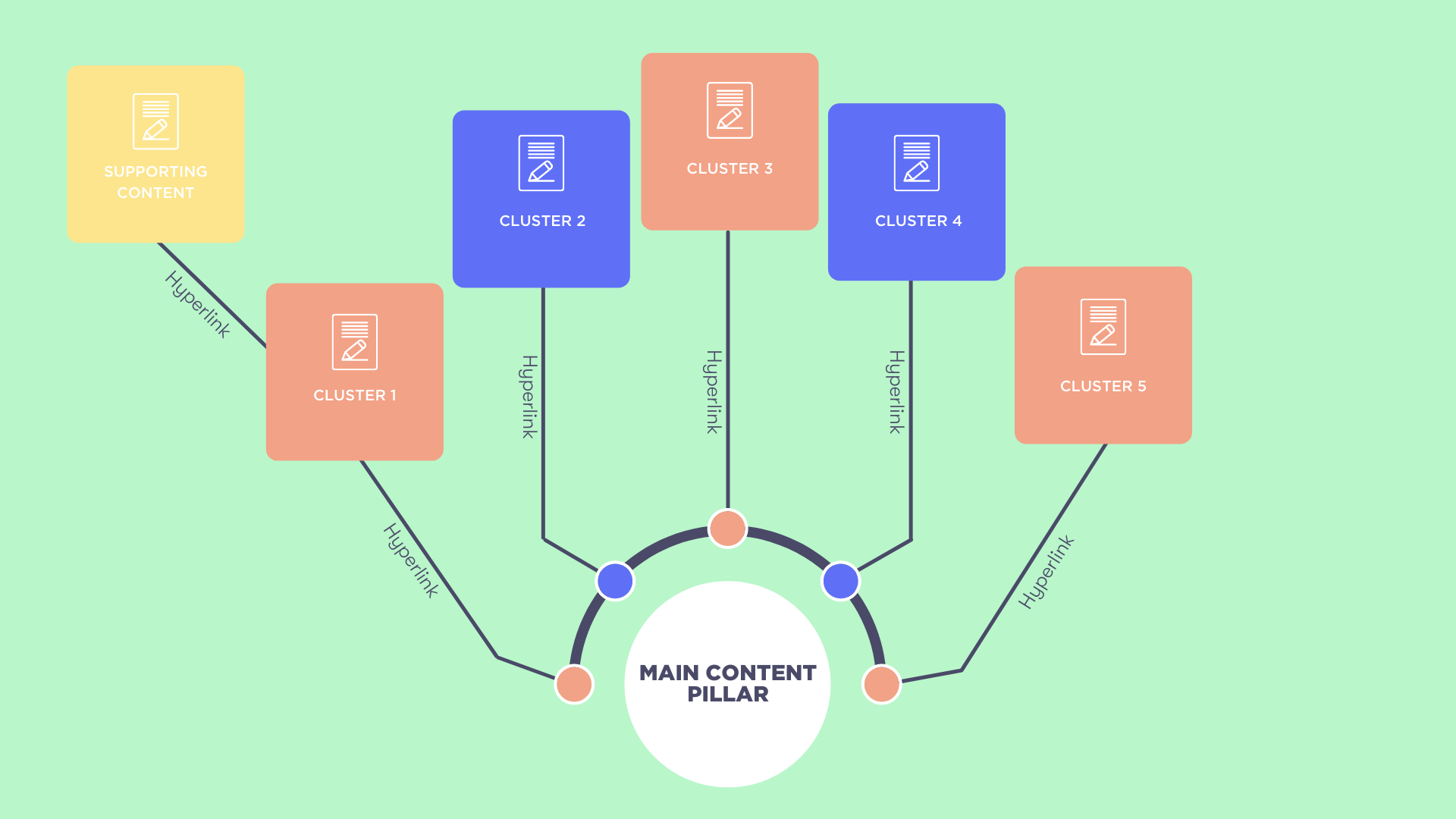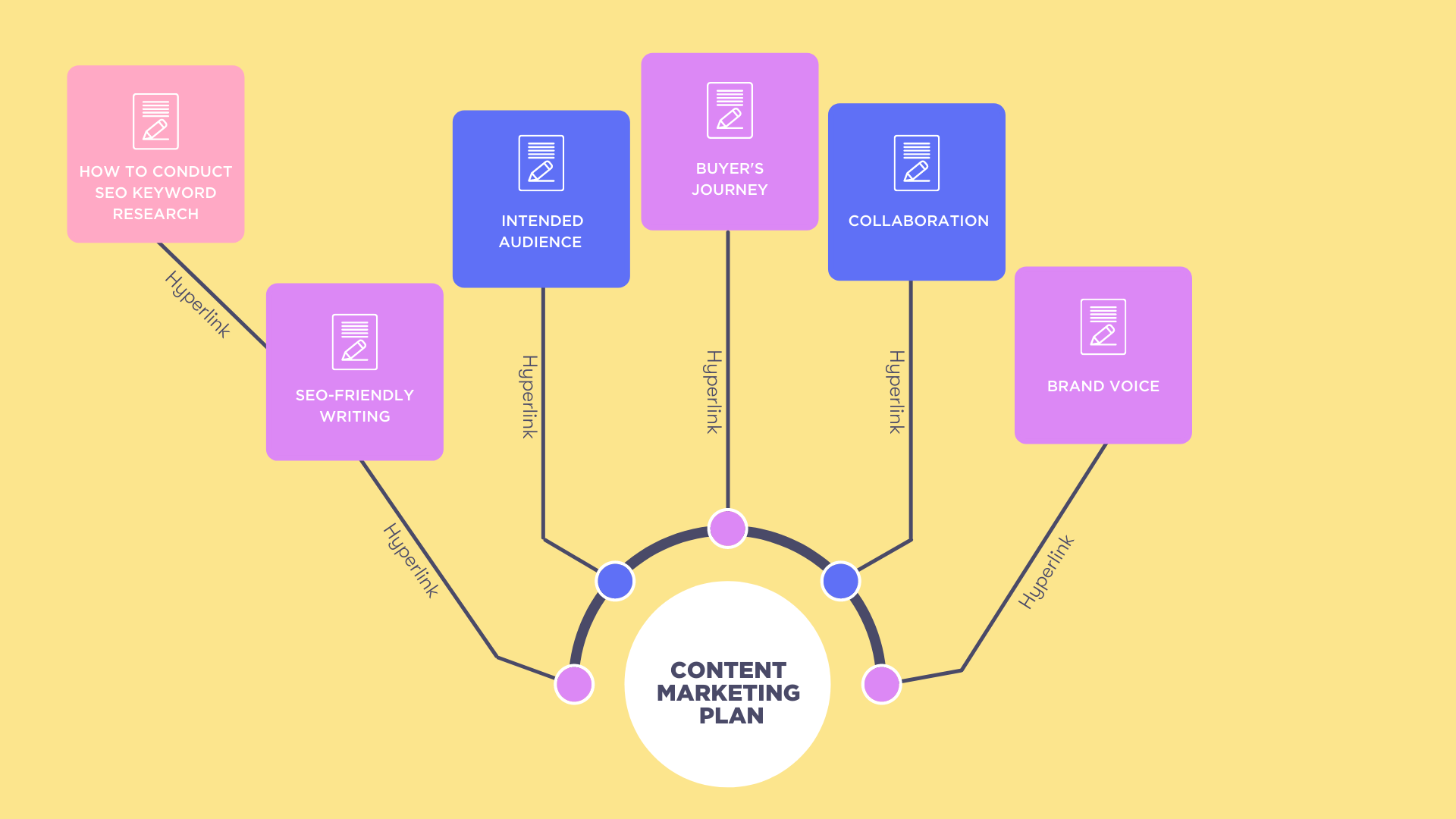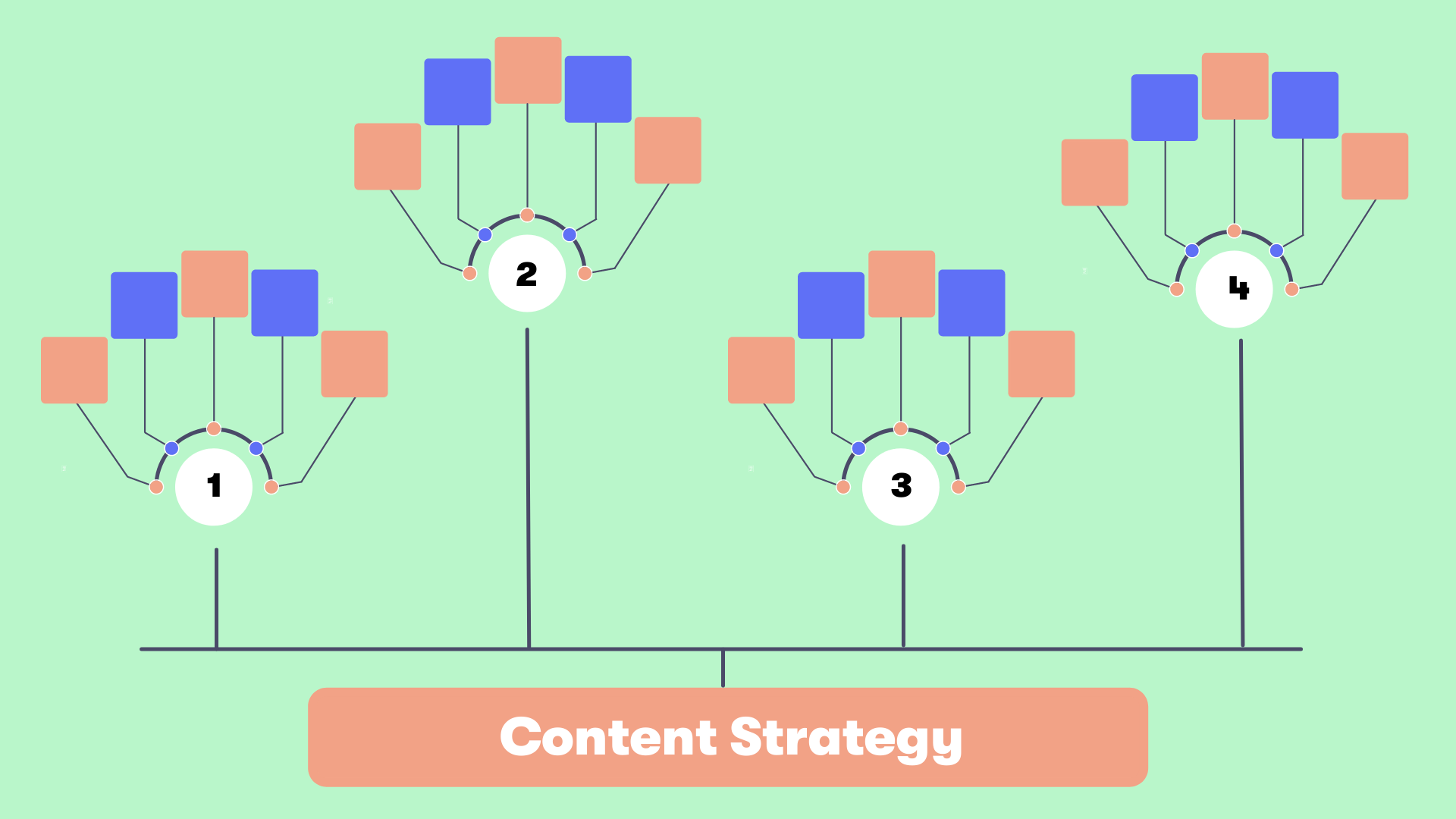How Content Pillars Can Level Up Your Marketing Strategy

What are content pillars?
If you’re looking to build your intended audience, improve your organic traffic, and make content planning a whole lot easier, you may want to adopt a strategy based on content pillars. This blog will walk you through the 5 steps of creating content pillars for long-form blogs and articles. And the best part: they work for teams of all shapes and sizes.
A content pillar is a key theme that supports your articles, blogs, videos, e-books, and infographics. Essentially, it’s a strategy framework that involves thematic groupings of all the topics from your content plan to organize your media and communicate a clear message. There are two types of pillar pages; main pillar and sub-pillar.
The main pillar is the overarching topic. It is typically tied to a short-tailed keyword and includes a complete or ultimate guide of +3000 words.
A sub-pillar is content that complements the topic in the main pillar. Sometimes it is also called cluster content. It includes long-tailed keywords and discusses central themes in greater detail. Content in a sub-pillar can range between 750-2,500 words.

To take pillars to the next level, some teams include supporting content in their marketing strategy. It’s information that contributes even further to main- and sub-pillars, such as long-tail question keywords that take the form of a short blog or landing page.
Why are content pillars important?
Creating pillars makes content planning so much easier. Say you have three content pillars and publish one blog a week. You can just cycle through one pillar per week for the next three weeks. Week 1 = Cluster 1, Week 2 = Cluster 2, and Week 3 = Cluster 4. It’s as simple as that!
Why do pillars help SEO content writing?
Search engines like Google analyze websites as a whole. That means the algorithm looks at the copy and its relationship with other pages (aka links). When a page has high-quality content and backlinks relating to the searched topic, Google recognizes that page as more relevant.
When you utilize content pillars, it helps create a hierarchy of topics on your webpage, leading to an organized structure on your site that Google can quickly shift through. If you practice SEO writing, take advantage of keyword research, and produce great content, you have a higher chance of ranking in SERPs.
The most crucial benefit of content pillars for SEO is the internal linking opportunities. When blog content is interconnected with links, it helps with a website's navigation and architecture as well as distributes page authority and ranking power. Of course, you shouldn’t link random pages. That’s why it’s crucial to have a strategy in place to maximize your blogs and long-form text.
A content pillar strategy in 5 steps
Step 1: Choose a topic
First, you’ll want to start your content pillar with an overarching topic. Don’t worry about keywords yet, just think about themes that align with your brand and business.
Remember to understand your target audience, brand purpose, and buyer’s journey. What would this demographic like to read about? What are their pain points? How will your content provide value to this group?
🍨 Sweet tip: If you’re struggling with coming up with topic ideas, look at your top-ranking blog posts or social media posts. This will give you some insight into your audience's interests!
Step 2: Conduct keyword research
After you have a pillar piece in mind, do keyword research to find out the questions people ask and what topics you could potentially rank for. This will serve as your cluster content later down the road.
Let’s look at one content pillar example. If your pillar piece is “workplace culture,” some cluster ideas based on keyword research could be four-day workweeks, remote working, or onboarding. Those clusters could be broken down further into your supporting content. Regarding remote working, you could write about “Why working from home is good for the environment,” or “Do people save money when they work remotely?”
Step 3: Organize your content and keywords
Review your list of potential topics and assign keywords that fit each group. Like the one pictured above, creating a mindmap is a great way to organize your ideas and research. But if you prefer lists, that’s perfectly fine too.
It’s essential to keep in mind that your topics can’t be too similar because they might compete with each other when Google is looking through your website. This is called “keyword cannibalization” and can hurt your SERP ranking. At the same time, the content should connect to incorporate links within your own website.
Step 4: Create content for your main pillar
Now that you have a plan, it’s time to write your pillar piece. Everyone has a different way of writing, but content pillars are usually much longer than the classic blog post. For instance, our pillar piece on content planning is nearly 3,500 words. With long-term content like this, think about an outline that would answer these questions:
- Will your readers have any follow-up questions on something that wasn’t fully addressed or explained?
- Are there enough examples to demonstrate your point?
- Do you have enough evidence to support your claims and make your content reliable?
- Do you have a table of contents, and is it logical?
Once you have an outline, assign deadlines to break the piece into digestible parts. That way, you’ll stay on track and confident throughout the entire process.
Step 5: Update pre-existing content
If you have past content that has the potential to fit under your main pillar, then definitely take the time to update it. That includes checking for SEO keyword variations, editing title tags and metadata, as well as adding any new content you’ve come across.
Now that you have some background and a content pillar strategy in action, how can you utilize these pillars on your website?
Content pillar examples
Thus far, we’ve discussed how to use pillars to support your content strategy. We’ve created an example based on Collato’s most recent pillars. Let’s have a look:

In the image above, we have our main content pillar, “content marketing plan.” It covers a broad topic that is highly linkable, meaning that other websites would like back to this page as a primary source of information.
This is where cluster topics make their move. After conducting keyword research based on themes covered in the pillar piece, we found topics and keywords to discuss further, formulating our cluster topics. If specific themes needed even more explanation, we would create a supporting article, as shown in the upper left and corner of the image.
How many content pillars should you have?
While our example only illustrates one pillar, you’ll likely have many pillars and sub pillars once you produce more content. It will look a bit like a spider web, with all your content somehow connecting to create your content strategy.

If your brand isn't keen on writing long-form content perse, there are three other ways to produce pillar content (you can even use them in addition to long-form content): resource pillar page, 10x content pillar page, and service pillar page.
1. Resource pillar page
A resource pillar page is a tool that acts as a bookmark for valuable links on a particular pillar topic. This could take the form of a brand-focused page, meaning that there’s a thematic topic, and it links to more in-depth topic clusters from content within the website. Perhaps you have an industry listing on your website, and when users click on a particular profession, they're taken to another page with all the information and links that pertain to them.
2. 10x content pillar page
A 10x content pillar page is an inbound strategy and is semantically related to a resource pillar page. It makes up a series of comprehensive training. For instance, if you’re offering a master class, your website would likely have a page clarifying the contents of the course and the links to all pillar pages in the topic cluster.
3. Service pillar page
If you offer a variety of products, services, or even classes, you should take advantage of a service pillar page, a central hub for focused information. It usually has a space to describe types of services and their benefits, step-by-step approaches, account setup processes, and pricing options.
This is a perfect option for the decision stage, where you’re expecting a CTA or opportunities to take further action.
One scoop of Collato, please
Content pillars are vital to maintaining a marketing strategy that drives SEO results and keeps your team organized. We hope that after reading this blog, you’re clear with what a content pillar is, what a content pillar looks like, and how to plan your own.
If you’re looking for a collaborative platform, Collato is the place for you! Our customizable templates let you plan your content, assign tasks to teammates, set publication dates, give and receive feedback, and store files and digital assets all in one place. That way, you can focus on creating content pillars without worrying about finding everything later. Click the link below to browse our free templates!
FAQ




